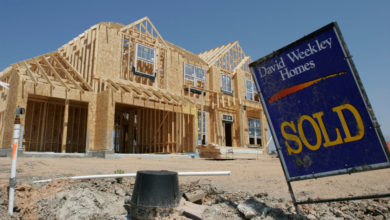Historic Flooding Hits Yellowstone National Park

(HELENA, Mont.)—A torrent of rain combined with a rapidly melting snowpack caused a deluge of flooding that forced the evacuation of some parts of Yellowstone National Park, cutting off electricity and forcing park officials to close all entrances indefinitely, just as the summer tourist season was ramping up.
There were many buildings and homes that were destroyed but no reports of injury. Yellowstone officials stated that they are assessing the damage caused by storms. The storms washed away bridges and created mudslides. Small cities were left isolated and forced evacuations via boat or helicopter.
It’s unclear how many visitors are stranded or have been forced to leave the park and how many people who live outside the park have been rescued and evacuated.
Some of the worst damage happened in the northern part of the park and Yellowstone’s gateway communities in southern Montana. National Park Service photos from northern Yellowstone show a massive mudslide. It washed out roads and bridges by the floodwaters of Lamar and Gardner rivers.
The flooding cut off road access to Gardiner, Montana, a town of about 900 people near the confluence of the Yellowstone and Gardner rivers, just outside Yellowstone’s busy North Entrance. Residents in Livingston were also evacuated from Cooke City after floodwaters flooded the area.
Park County which includes these cities announced on Facebook Monday night that flooding had rendered drinking water unfit for many people in several areas. Rescues and Evacuations were continuing and officials advised people to keep their homes overnight if they were not in danger.
Tuesday’s announcement by the Montana National Guard stated that two helicopters were dispatched to Southern Montana in support of evacuations.
Cory Mottice is a Meteorologist at the National Weather Service, Billings (Montana), and said that rain was not forecast for the near future. However, cooler temperatures are expected to reduce the snowmelt over the next few days.
“This is flooding that we’ve just never seen in our lifetimes before,” Mottice said.
Although climate change has been implicated in more extreme and frequently occurring extreme events like storms or floods, scientists believe it is also responsible for wildfires. But, individuals are often unable to directly link climate change with single weather events without extensive studies.
According to the National Weather Service, Monday’s Yellowstone River crested at Corwin Springs at 13.88 feet (4.2 meters). This is higher than the 1918 record (11.5 feet (3.35 meters)
Parker Manning was at a Gardiner cabin and had a close-up view of the Yellowstone River floodwaters rising.
“We started seeing entire trees floating down the river, debris,” Manning, who hails from of Terra Haute, Indiana, told The Associated Press. “Saw one crazy single kayaker coming down through, which was kind of insane.”
Manning witnessed Monday evening as the rapid waters subcut the riverbank opposite, creating a flood that caused a house in Yellowstone to collapse and then float off mostly intact.
Floodwaters inundated a street in Red Lodge, a Montana town of 2,100 that’s a popular jumping-off point for a scenic, winding route into the Yellowstone high country. The Billings Gazette reports that Kristan Apodaca, who was standing across from the bridge collapsed by floodwaters, stood 25 miles (40 km) northeast of Joliet.
The log cabin that belonged to her grandmother, who died in March, flooded, as did the park where Apodaca’s husband proposed.
“I am sixth-generation. This is our home,” she said. “That bridge I literally drove yesterday. My mom drove it at 3 a.m. before it was washed out.”
Yellowstone officials evacuated northern Yellowstone on Monday. Roads may be impassable for some time. Park Superintendent Cam Sholly stated in a statement.
However, the floods also affected other areas of the park. Officials warned of more flooding as well as potential issues with the water supply and wastewater systems in developed areas.
The rains hit during the high tourism season: June, at the onset of an annual wave of over 3 million visitors that doesn’t abate until fall, is one of Yellowstone’s busiest months.
Yellowstone saw 2.5 inches (or 6 centimeters), of rainfall on Saturday, Sunday, Monday and Tuesday. According to the National Weather Service, Yellowstone’s Beartooth Mountains got up to 4 inches (or 10 centimeters) of rain.
Flooding on the Stillwater River left 68 homeless people in south-central Montana. Stillwater County Emergency Services personnel and Stillwater Mine crews saved people by raft Monday at the Woodbine Campground. Residents have been evacuated from some roads that are currently closed due to flooding.
“We will be assessing the loss of homes and structures when the waters recede,” the sheriff’s office said in a statement.
The floods occurred while the U.S. was experiencing dry and hot weather. Over 100 million Americans were told to stay inside as heat waves sweep across states, from the Gulf Coast to Great Lakes to east to the Carolinas.
Crews are fighting wildfires across the West in dry, hot and windy conditions.
Here are more must-read stories from TIME





